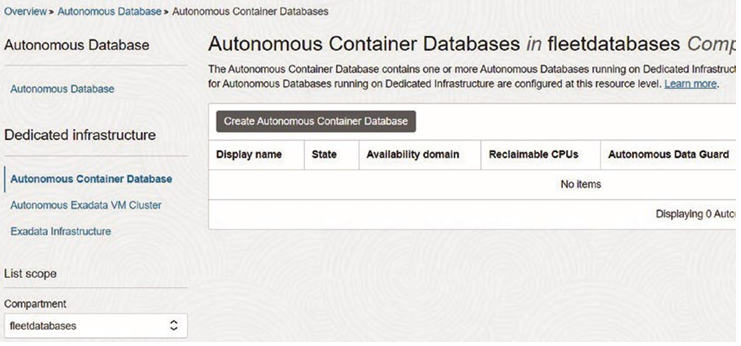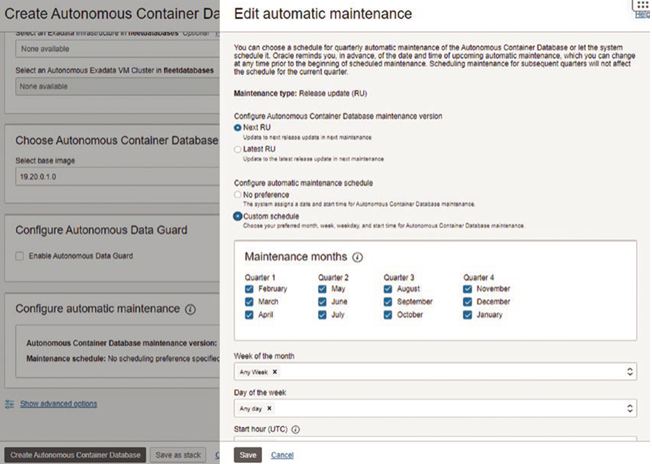In Figure 17-2, you see the compartment is the first choice and should be prepopulated if already working in that compartment. Provide a name for the infrastructure, and refer to your company standards and guidelines for naming conventions.
There is a choice of availability domain that depends on the tenancy you are working in, and another choice on the system model for the Exadata. The default is the latest and greatest model available.

Figure 17–2. Exadata infrastructure form
Maintenance can be configured differently and customized, including on the schedule shown in Figure 17-3. Patching can be rolling or nonrolling.

Figure17-3.Advanceoptionsmaintenance
Once the Exadata infrastructure is created, the VM clusters can be created. Figure 17-4 shows this as the next choice, working the way up from the Exadata infrastructure.

Figure 17–4. Creating VM clusters
As shown in Figure 17-5, the previously created Exadata infrastructure is included in order to create the VMs on the right infrastructure. The display name again should follow your company standards or guidelines set for this database environment.

Figure17-5.InformationforautonomousVMcluster
ECPUs are the elastic cores for Autonomous Database. Figure 17-6 shows not just the ECPUs to adjust but other resources on the VM to put limits on containers. Setting the details on the number of Autonomous Container Databases doesn’t limit the number
of pluggables or Autonomous Databases in the container, but the memory and storage limits might do that.

Figure17-6.SettingVMresourcesforcontainers
The last component we will look at here is the Autonomous Container Database, as shown in Figure 17-7.

Figure 17–7. Creating the Autonomous Container Database
The create information requires the compartment, the Exadata infrastructure, and the VM Cluster, as shown in Figure 17-8. Also, here you will see that the version of the Autonomous Container Database is available for the base image.

Figure 17–8. Providing information for the Autonomous Container Database
The last step in creating the container is editing the automatic maintenance. Figure 17-9 shows the choices for the schedule and patching.

Figure17-9.Configuringmaintenance